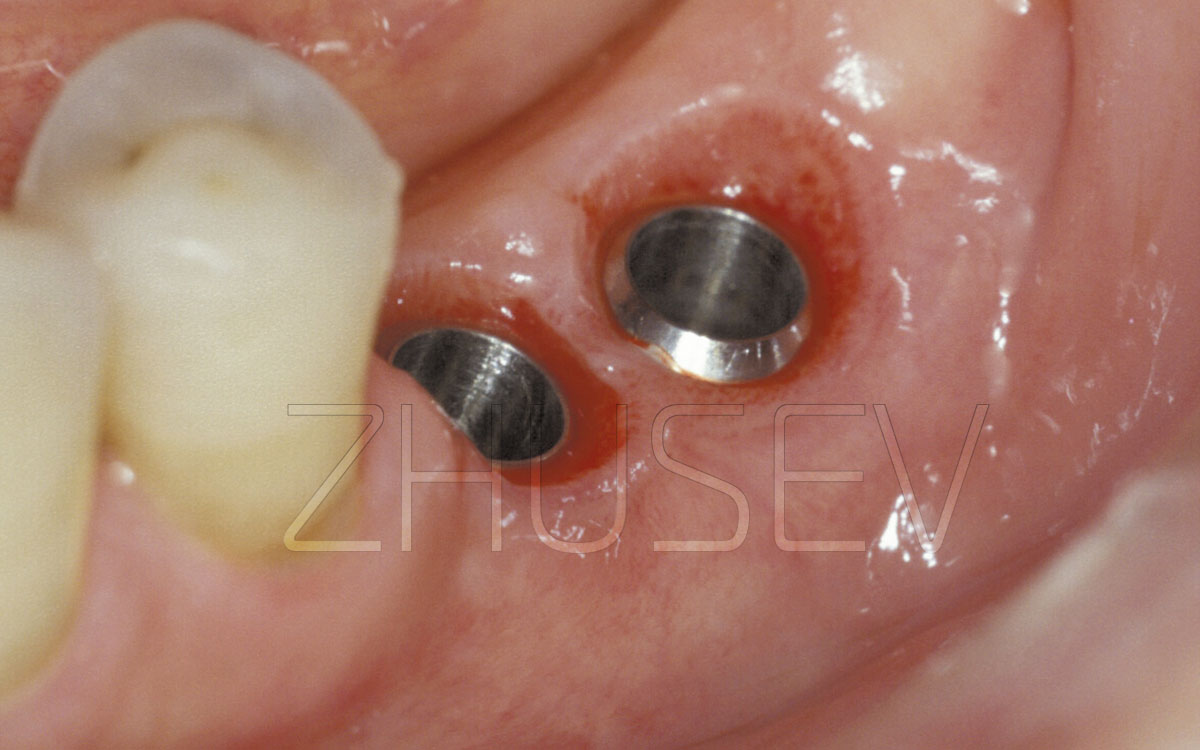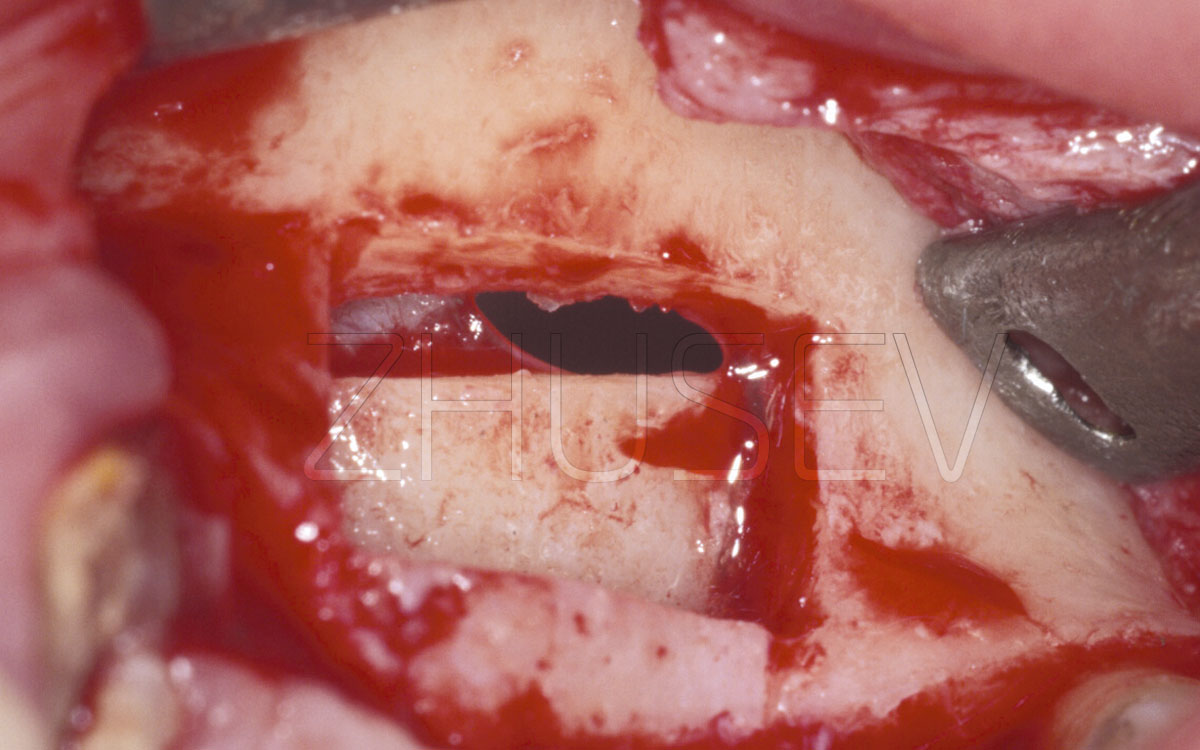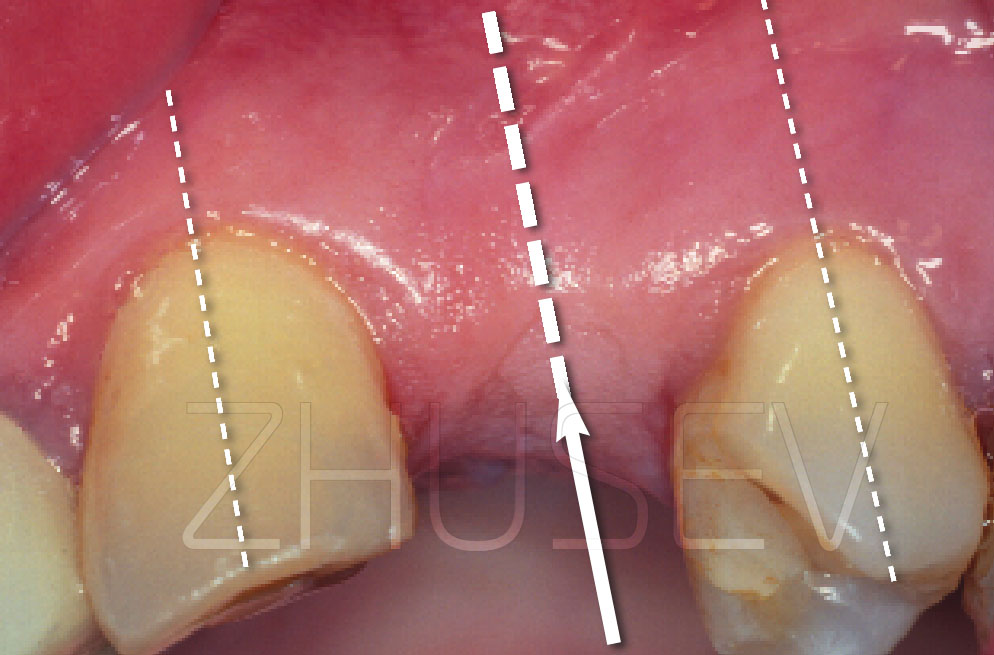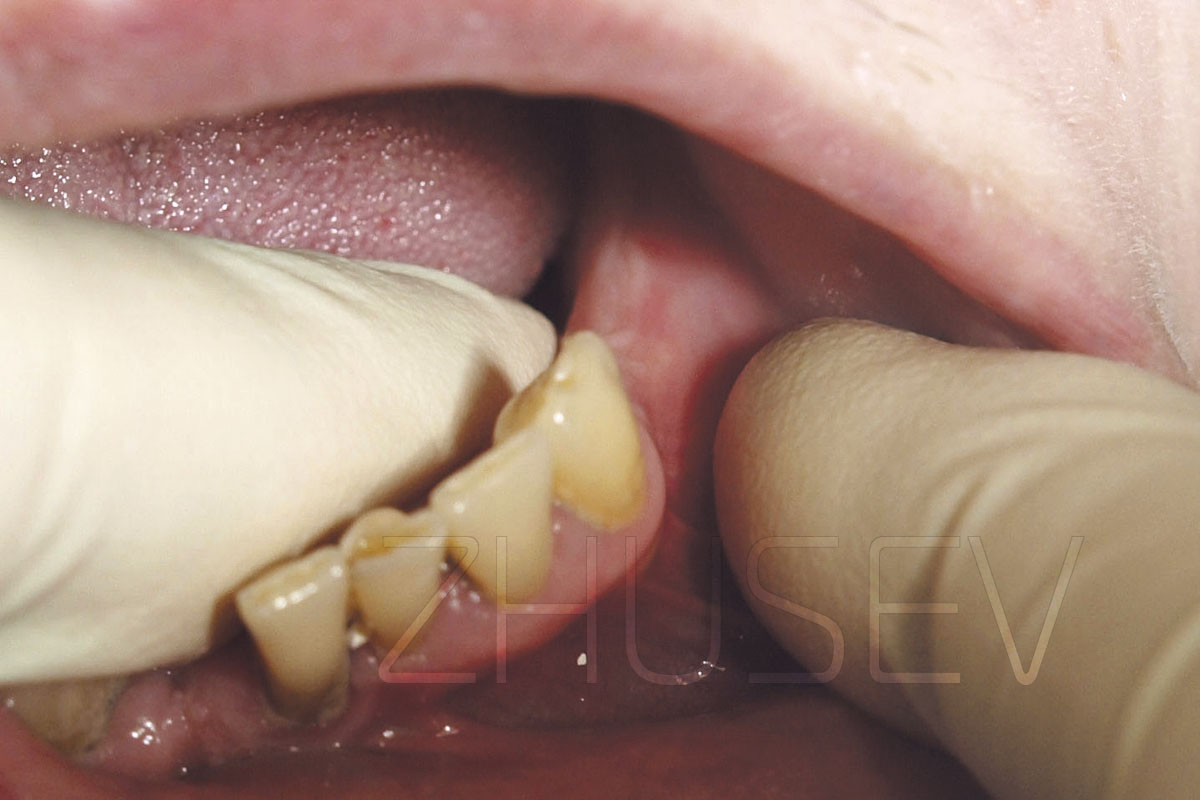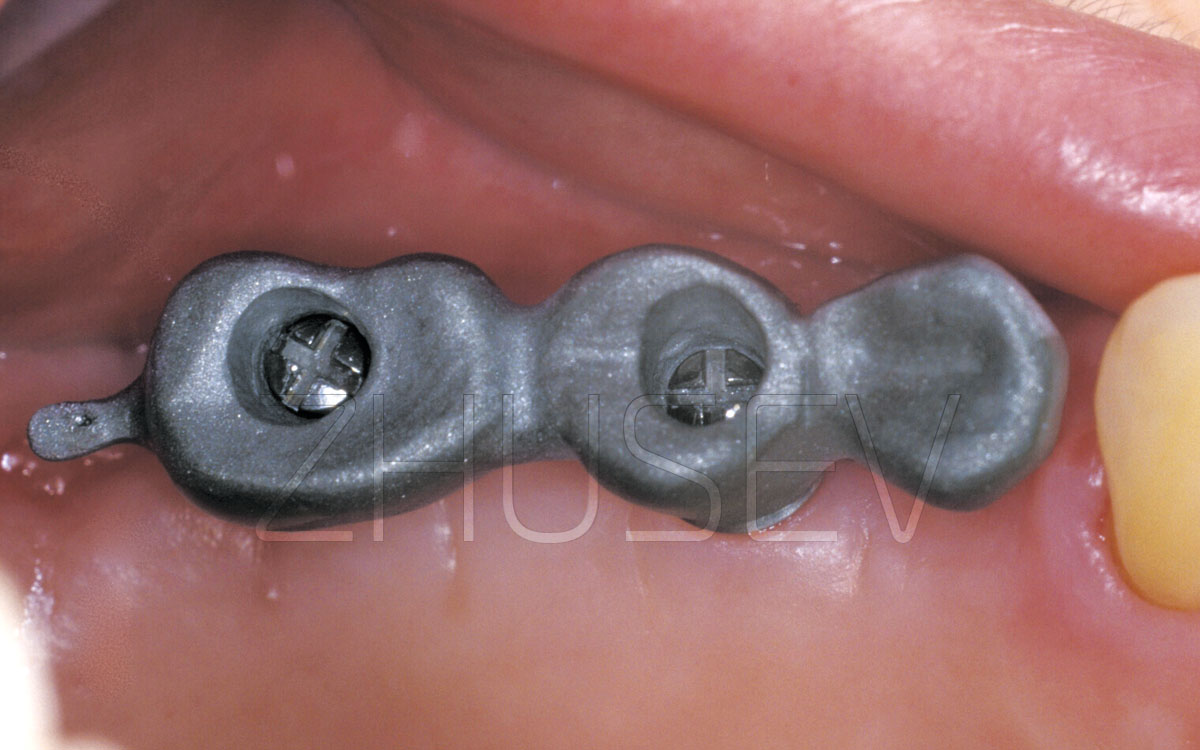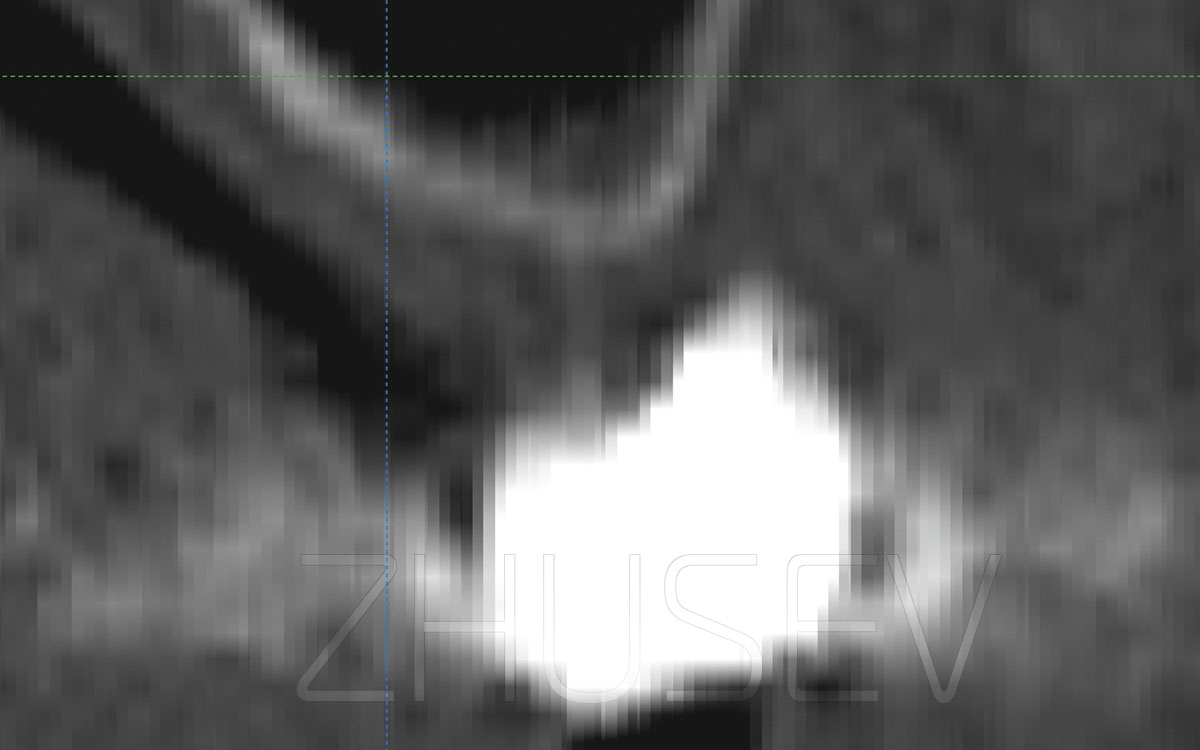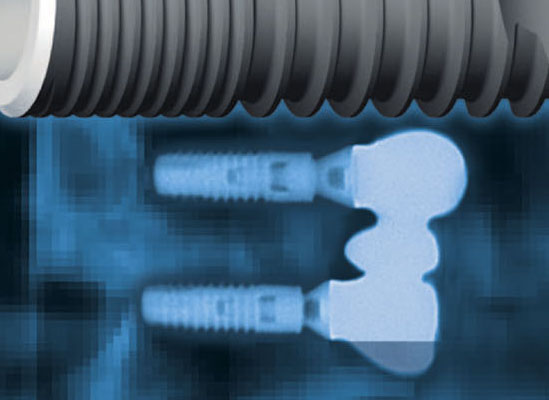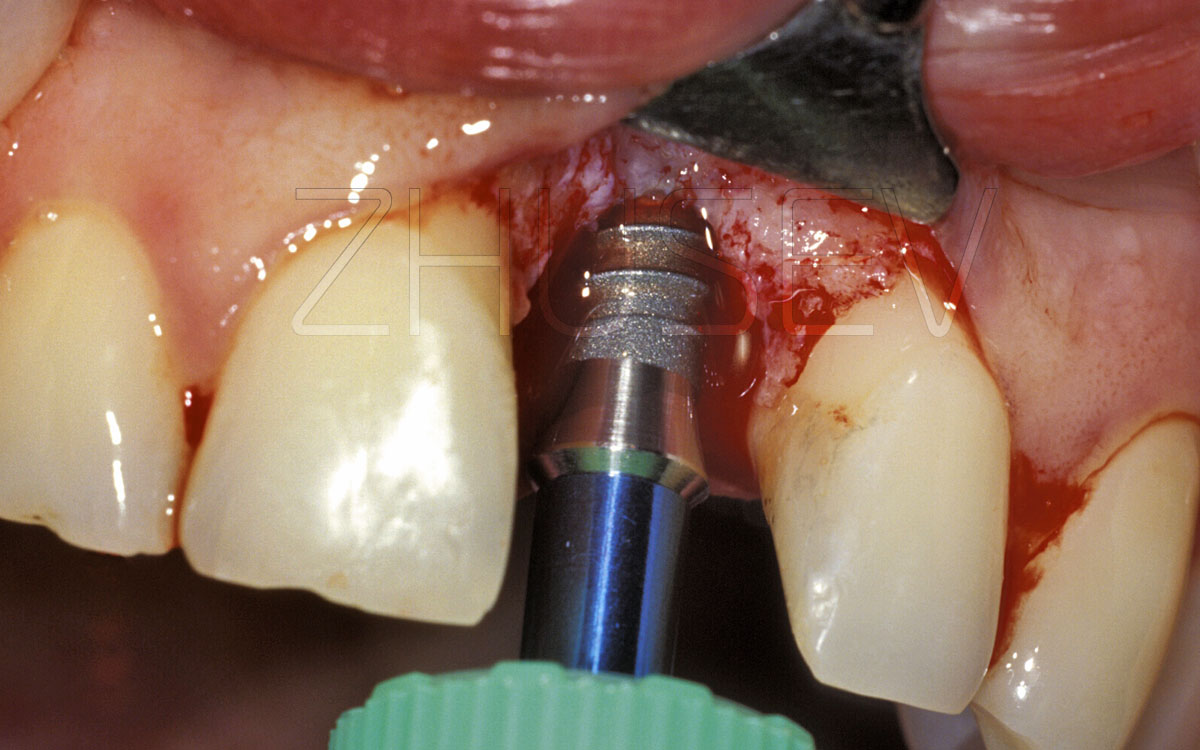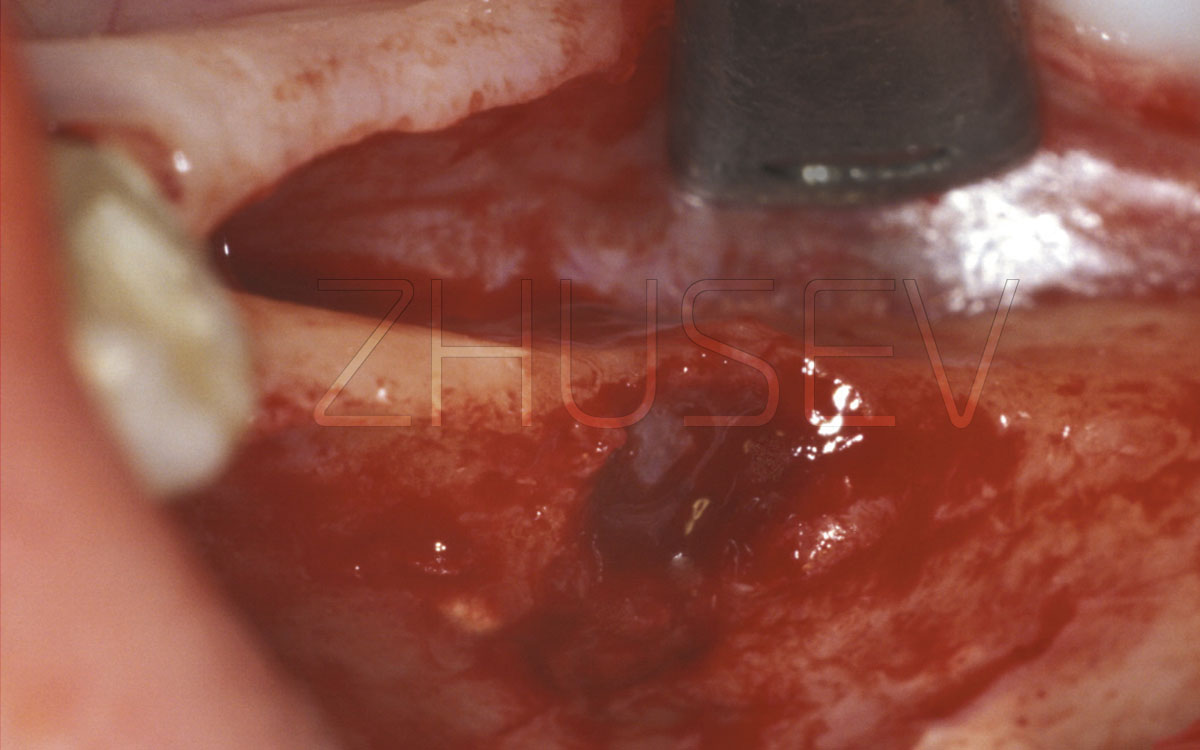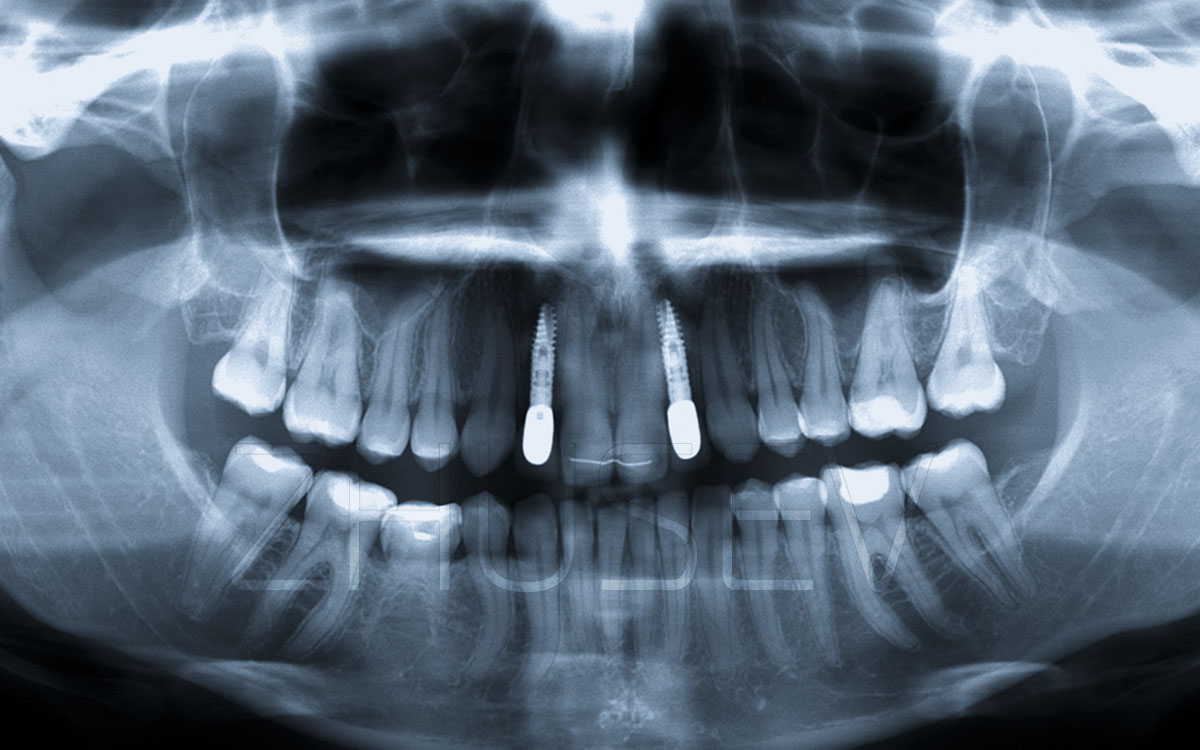After the period of osseointegration we make a reference X-ray and, if everything suits us, we can go on to the placement of the healing cap. Here, the task is to accurately uncover soft tissues directly above the cover screw, to turn it out and place a healing cap. There are a lot of methods to reveal the cover screw – from making a small cut above the placed implant with a lancet to application of diathermy coagulator and laser. In fact, I have tried all these techniques and chosen a very simple tool – a soft tissue trimmer 3.1-1. This allows removing the soft tissues very accurately, with a minimal risk of trauma, and forming in them a hole of any shape defined.
After uncovering the mild tissues we firmly put the screwdriver into the cover screw and turn it out. Clean thoroughly the internal surface of the implant and then screw the healing cap on, covered with Solcoseryl dental adhesive paste (try to put the paste not on its thread, but on the part that is to contact the mucosa 3.1-2D.
It is important that the healing cap should extend above the level of surrounding mucosa distinctly at least 1 -2 mm 3.1-4. Normally, the healing cap is retained in this position for another 5 to 7 days.
If after this time you unscrew the healing cap and see that the gingival tissues are bleeding, put on some Solcoseryl dental adhesive paste again and leave the healing cap covered for another 5-7 days. If you do not do it and immediately start taking impressions, it is very likely that the impression material may penetrate into subgingival space (especially when the compression technique impression is applied), get off while being removed, and afterwards cause a serious inflammation.
